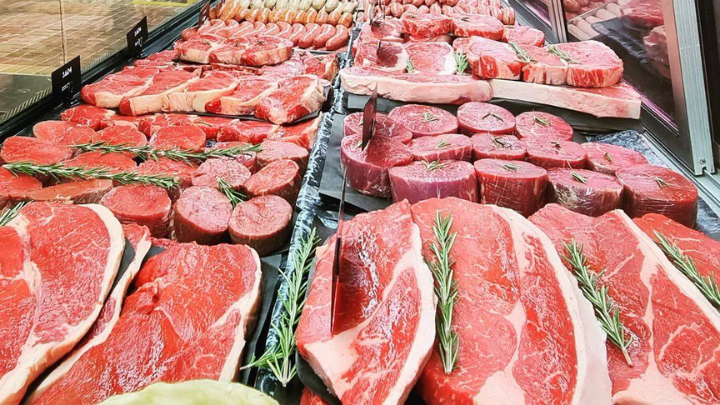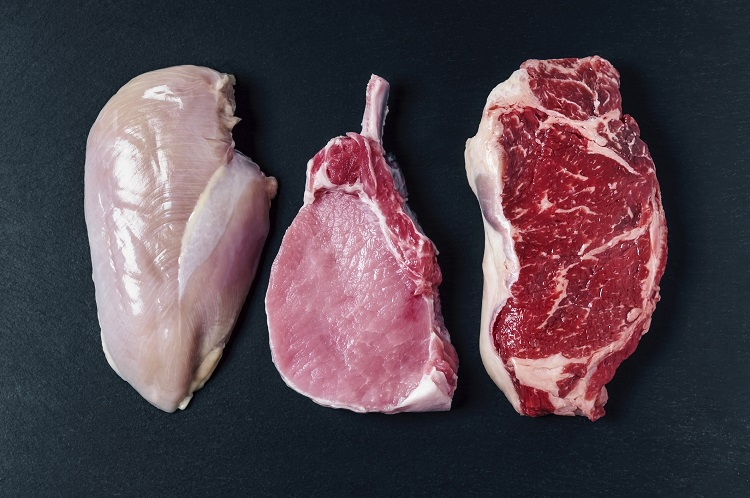Buying fresh, high-quality meat doesn’t have to feel like guesswork. The color of the meat—whether vibrant red, light pink, or even dark—can reveal a lot about its quality and freshness. For instance:
- Red Meat: This bright hue signals freshness and high myoglobin content, which interacts with oxygen to create that natural red color.
- Light Pink Meat: Often a result of proper freezing and thawing, this meat can still be good if it has the right texture and smell.
- Dark or Discolored Meat: If the meat looks blackened or unusually dark, it’s a sign of improper handling, aging, or spoilage.
Understanding why these color differences occur is essential for picking safe, nutritious meat at the market.
What Causes Meat to Turn Dark or Pale?

The color of meat changes naturally over time, but extreme shifts in tone can indicate spoilage, water tampering, or poor quality. Here’s what you need to watch out for:
- Dark or Blackened Meat: This is a red flag. It often happens due to blood clots, poor storage, or decomposition. If you notice patches of dark meat or an unusual black tint, avoid it entirely.
- Pale or Wet Meat:
- Freezing and Thawing: When meat is properly frozen and thawed, it can take on a lighter pink tone. This is perfectly safe, as long as it’s firm and odor-free.
- Water Injection: Some sellers inject water to increase the meat’s weight and make it look plumper. You can spot this tampered meat because it feels overly wet and releases excess water when touched.
By observing color, texture, and moisture, you can confidently identify meat that’s worth buying.
Different Cuts of Pork and Their Natural Colors
It’s also important to note that not all cuts of meat look the same. Certain parts of the animal have slightly different hues due to their muscle composition, fat levels, and blood circulation.
- Tenderloin: This cut is naturally lighter in color because it’s lean with minimal blood flow.
- Shoulder (or Butt): Expect a darker red shade due to its rich blood flow and marbling.
- Ribs: These cuts typically fall between light and dark, offering a nice balance of fat and lean muscle.
Knowing what to expect from different cuts helps you avoid unnecessary confusion while shopping.
6 Essential Tips to Choose Fresh, High-Quality Meat
When buying meat, keep these six points in mind to ensure you’re bringing home the best quality:
1. Trust Your Nose
Fresh meat has a clean, neutral smell or a very mild scent. If it smells sour, rancid, or overly pungent, it’s likely spoiled. Pork and poultry, in particular, should have no noticeable odor at all.
2. Pay Attention to Meat Color
The color of the meat is one of the clearest indicators of its quality:

- Pork: Fresh pork should be pink or light red. Avoid greenish or blackened patches.
- Poultry: Healthy chicken or turkey will look light pink or white. Avoid cuts with bruises or dark spots.
- Red Meat: Look for a vibrant red hue, which signals freshness. Dull or brownish colors can mean the meat is aging or improperly stored.
3. Check the Texture
Good meat feels firm and springy to the touch. Here’s what to look for:
- Firmness: Fresh meat should bounce back when lightly pressed. If it feels slimy, mushy, or sticky, it’s not fresh.
- Moisture Content: While some moisture is natural, meat that drips excessive water may have been tampered with or improperly stored.
4. Inspect for Safety Certifications
Always check for labels or certifications that verify food safety standards. For instance, meat regulated by organizations like the USDA or local food authorities guarantees it has been properly inspected and handled.
5. Opt for Skinless Cuts
If you’re choosing pork or poultry, skinless options are a healthier choice. The skin contains high levels of saturated fats, which contribute to cholesterol and heart-related issues. You can also trim excess fat yourself for a cleaner, leaner cut.
6. Know the Source
Purchasing meat from a trusted butcher or market makes a huge difference. Locally sourced, ethically raised meat tends to be fresher, safer, and richer in nutrients. Ask questions about where the meat came from and how it was handled.
Red Meat vs. Light Meat: What’s Better?

Both red and light-colored meat can be good, depending on how they were stored and handled. Here’s the breakdown:
- Red Meat: A bright red hue is a positive sign of freshness. These cuts are ideal for cooking immediately or storing short-term.
- Light Meat: Pale meat is often safe if it’s been frozen and thawed properly. However, avoid cuts that appear excessively wet or lack firmness.
When in doubt, check the texture, moisture, and smell to ensure the meat meets quality standards.
The Dangers of Buying Low-Quality Meat
Buying poor-quality or spoiled meat can have serious consequences. It’s not just about taste—spoiled meat can lead to foodborne illnesses, including salmonella and E. coli infections.
- Avoid discolored or slimy meat.
- Stay away from cuts with a strong, off-putting odor.
- Check for safety certifications on packaged meat.
By being mindful and selective, you reduce the risks associated with consuming subpar meat.
Conclusion: Smart Tips for Choosing Fresh Meat Every Time
Selecting high-quality meat at the market doesn’t have to be complicated. Pay attention to key indicators like color, texture, and odor to ensure the meat is fresh and nutritious. Remember:
- Bright red or pink meat signals freshness.
- Avoid overly pale, watery, or darkened cuts.
- Trust your nose—spoiled meat has a foul smell.
- Buy from reputable butchers or trusted markets.
By following these tips, you can confidently choose safe, healthy, and flavorful meat for your meals. Trust your senses, stay informed, and make choices that prioritize your health and satisfaction


